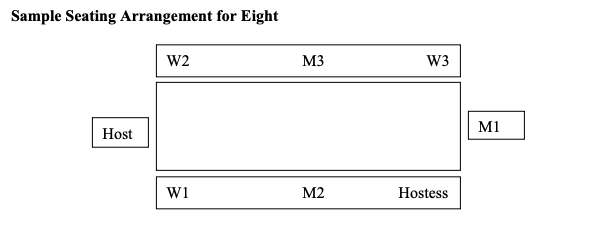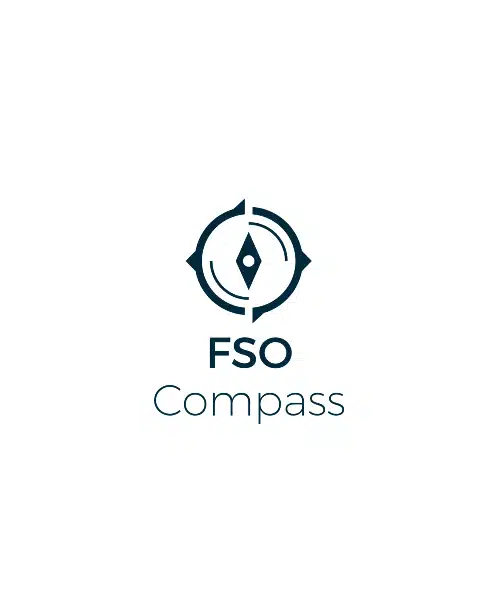I was looking for a fun first post to kick off 2019 when I stumbled upon the official “Protocol for the Modern Diplomat” handbook, published by the Foreign Service Institute.
If this manual will get me one step closer to being suave like Bond, then how could I not read it? …Right?
Jokes aside, it was rather interesting to read, and I wanted to share it with you. Will it help you become a Foreign Service Officer? More than likely it won’t. However, it does give you a glimpse into Foreign Service etiquette.
A lot of it is “common sense”, but unfortunately it is a sense that many do not have. I would love to be able to assign this guide as required reading for a few people that I know, but c’est la vie.
Let’s dive in!
What is protocol in the Foreign Service?
The rules and processes of diplomatic protocol are based in pragmatic thinking, common sense, and good manners—areas where we all have had some experience.
Protocol is all about procedure, predictability, and creating a social framework and hierarchy.
It is the counter to the “relaxed atmosphere of American society” that we currently live in, and a return to “social behaviors that were routine a generation ago” (as described in the manual).
Essentially, the Foreign Service Officer, and to an extent the Officer’s family, are always being observed and judged, especially during formal situations. As such, protocol is a set of rules to help Foreign Service Officers minimize misunderstandings and potentially being perceived as rude by other cultures, people, and dignitaries.
Many of the protocols listed in the manual are, as quoted above, common sense. But I do appreciate the need to make sure that such a publication exists. Also, I wouldn’t be surprised if there is a training session at FSI during A-100 that goes through all of this as well.
There are a lot of great tidbits in the manual, but what follows are the 14 protocols I found most interesting.
14 interesting protocols a FSO must follow
When referring to a U.S. post, “the Embassy of the United States of America” is preferred over “the American Embassy.” As references to America can be ambiguous, especially in the Western Hemisphere, avoid using terms such as “American ambassador” or “American citizen.” Similarly, to be clear and to avoid offending others by suggesting that the U.S. constitutes the entire continent use “United States” in all references to this country.
Thank you! Now can this be taught to everybody in this country? This most likely has to do with my upbringing overseas and having a mother from Central America, but individuals who do not say the United States of America, and instead say America to represent the U.S., has always been a silent gripe of mine.
The continents in the Western Hemisphere collectively share the name America. It is important when making distinctions to do so correctly so as to express our respect to our neighbors.
The purpose of making introductions is to exchange names between people so that a conversation can follow. For a formal occasion, the traditional “Mrs. Smith, may I present Mr. Jones?” is used internationally. For less formal occasions simply stating the two names, “Mrs. Smith, Mr. Jones,” is acceptable.
After reading this line, I don’t think I have ever been formally introduced in my life. From now on, “Mrs. Smith, may I present Mr. Jack” shall be the introduction I look forward to from all pFS readers I have the utmost pleasure to meet.
Also, I very much appreciate FSI explaining the purpose of introductions. If someone from FSI is reading this, could you please go around to all the bars in Washington, D.C., and inform all young professionals that an introduction of “hi, who do you work for” is a big no no. (Also, I love that Word is trying to correct my grammar from “who” to “whom”)
As they do when a woman enters the room, men should rise when being introduced to a woman. In some countries, a man kisses a married woman’s hand. Men also rise when being introduced to another man. Women should rise when being introduced to another woman for whom she wishes to show great respect, such as the hostess, a very distinguished woman, or much older woman. In some countries, women rise when introduced to all others.
Ah, rising for others, a style that has clearly gone out of fashion. Admittedly, when I met a friend of a friend who was doing this at parties, he was seen as a bit of an oddball. Unbeknownst to us, he was following protocol.
How many of you rise when being introduced?
The exchange of Business Cards may follow a ritual. Notice how one presents their card and accept it in a similar manner. If two hands are used holding the top corners face up so they you may read it as you receive it, accept it with two hands. Take time to read the card before putting it away. As you present your card, take care that the print is face up and facing the receiver. Do not exchange cards while seated at a formal dinner; there is time before or after.
This may hold sway in certain countries, but I do wonder how the rise of smart phones and the internet have changed the practice of presenting business cards. From now on, when I receive a business card I am going to follow the decorum above.
An ambassador and his/her spouse precede all others when entering or leaving a room. The official place for the ambassador in the car is the backseat, curbside. His/her car is allowed to pass before all others. At ceremonies that take place on ships, the ambassador is the first to step on deck and the first to step off, and at airport ceremonies, he/she is the last to board and the first to disembark. When you attend social functions that the ambassador and other high-ranking U.S. officers are also attending, you should arrive approximately fifteen minutes early and make a special point to greet these officers.
Wow. Just wow. I find all of the above very interesting. The first ¾ on entrance and exit I did not know, though it does make sense.
But that last sentence?
You must arrive 15 minutes early? Arriving to a function 15 minutes before it starts does not sound like the correct practice, it actually sounds rude. I am not sure about this one. I am open to your thoughts and interpretations.
You should remain at any dinner party (U.S. or foreign) until all persons of all nationalities who outrank you have departed.
No Irish goodbyes allowed. This is another interesting protocol as it speaks to rank and social expectation when at formal functions. What if you are not a late night person, but there is someone who outranks you and is a party animal? Are you expected to stay there? Or does protocol allow for a common departure time to leave if the party animal wants to make a night of it?
At a small function, remain until he or she leaves. At a large function, make your departure known to the Ambassador. However, never be the employee whose departure would leave the Ambassador or spouse alone.
Well, now it looks like we are getting into the land of when protocol breaks down. So you cannot leave if someone at the party outranks you, but if you do leave make sure to let that person know, especially the Ambassador.
But most importantly, DO NOT LEAVE if your departure would leave the Ambassador all alone. I am shaking my head a little here, but I am sure this is all for security purposes. The Ambassador is the highest-ranking representative of the U.S. to the host country. Their security is of the utmost importance. But if it gets to the point when it is just you and the Ambassador at a formal party, has something already gone wrong? Clearly the protocol has been abandoned at this point.
Gender roles vary from country to country, and sometimes even within regions of one country. For example, a husband may be expected to precede his wife in a receiving line, or men and women may go into separate rooms for dessert. Although men and women may drift away from each other and talk amongst themselves, the practice of actually separating men and women at any time during a dinner party is rare even in primarily gender-biased societies. Be aware that this may happen and when it does, it is best to go along with these traditions. Lacking a specific mission agenda, the diplomat’s role is not to change host country customs. The country may not consider gender bias an issue that needs to be addressed.
I know the State Department has changed their official stance on LGBTQ personnel, but I wonder how the statement above works in practice. I welcome comment.
If using place cards, follow the rules of precedence to determine who will be placed in the seat of honor (for a man, the seat to the right of the hostess and for a woman, the seat to the right of the host). If there is no prepared seating plan, ranking guests should be invited to sit at the host’s table.
Again, I wonder how the above meshes with this statement. Secondly, now I know I need to make sure I am sitting to the right of the hostess…
To stand in line and receive guests with a drink or cigarette in your hand is considered discourteous.
Massive fail here, as when I am welcoming friends and family to a party I usually have a drink in hand. But that said, this is for receiving guests, so I haven’t broken any major rules yet.
When giving a toast, rise in place and speak to the entire room. Raise your glass to eye level and look toward the honored person and drink, making eye contact with the honored person. You should then nod and put your glass on the table and sit down. The person being toasted should never drink to himself/herself. A nod or smile of appreciation can suffice for a response, or the honored person can return the toast by rising afterwards and offering a formal response.
Ok, now this I have definitely not done. I actually thought it was discourteous to not drink when a toast is made to you. Live and learn.
When coffee is served after a meal that is the cue to leave in about 20 minutes if you are a guest: if you are a co-host, depart only after the last guest has left.
I actually snorted with laughter at this one. My household did not keep to this. Yes, coffee was usually one of the last things provided. But the coffee would normally lead to discussion that lasted another hour or two. Then again, when you are raised in a ½ Latin household, there is a blend of customs.
Woman enters seat from the right; man holds chair and stands behind.
Have I done the second part, most definitely. But did I know that the woman must enter seat from the right, not at all. I just open to whatever direction she is coming from.
Foreign Service officers are prohibited from accepting decorations from foreign governments.
Makes sense, but I did not know this. I actually thought I had heard of Officers who have received decorations in the past, but I may be mistaken.
Interested to read more?
Those were the points of interest that I found from the manual. What do you think?
You can find the entire guide at the State Department’s website.
It was last revised in 2013, but in my opinion it requires updating to meet the questions I raise above.
I look forward to your thoughts, and happy New Year!




